20 Best Perennial Plants for Full Sun
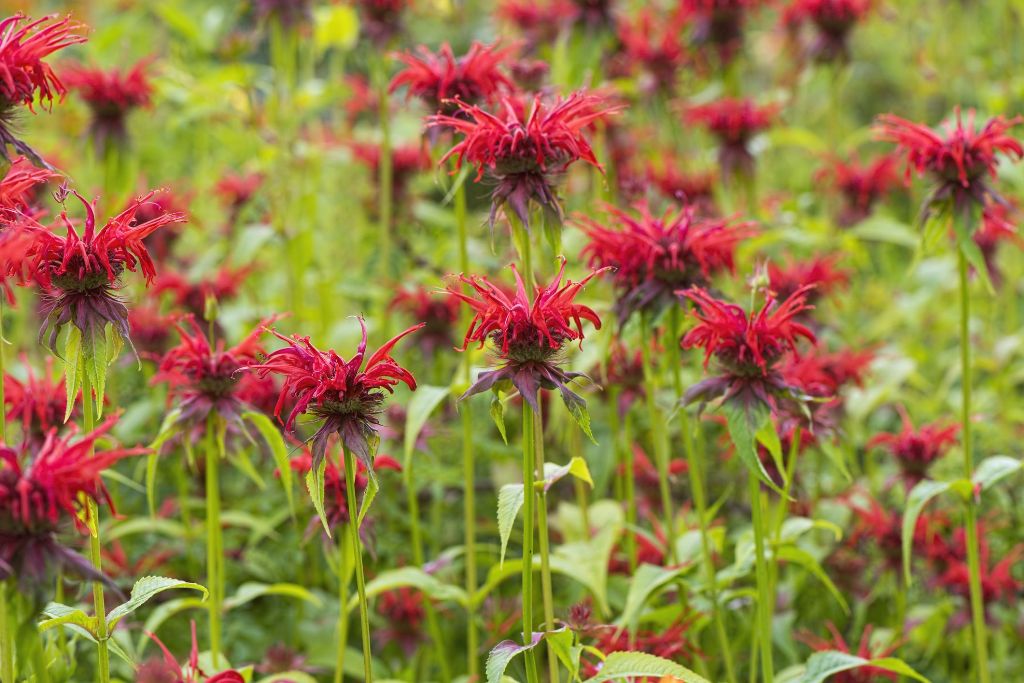
Do you ever feel like creating a living art with a variety of flowers and plants at your home? Sounds, amazing right? Whether you are a beginner or pro at gardening, perennial plants can be your best companion for fulfilling it.
The two major types of plants include annuals and perennials. Annuals belong to that category, which experiences the entire lifecycle from germination to growth and yield inside a year. Perennials live for a long while, and the plant takes rebirth after the blossom cycle for a year again.
Table of Contents
Advantages of Growing Perennial Plants
There are several advantages in growing perennial plants at your home or garden for a longer period which are described below:
1. Pollinator Captivation
Pollinators share a complex relationship with flora, which is particularly adapted to each other. Plants are dependent on these pollinators for pollination, and plants like Butterfly Bush attract butterflies, hummingbirds maintaining the delicate natural balance, which depends on them to survive.
2. Low Maintenance
The well-adapted perennials thrive without any use of special fertilizers and pests in the right growing conditions. The low maintenance and savings by just watering the plants thoroughly during the week under partial to full sunlight are one of the best advantages in growing a perennial plant in the balcony of your house.
3. Drought Resistance
Perennial plants are often considered to be the best choice for hot and dry areas. These plants have an inbuilt native mechanism to survive limits of drought without excess irrigation. The drought-tolerant nature helps your plant reduce watering needs and allows your garden to look clear green even during the dry season.
4. Plenty of Varieties
Due to the various blooming times, perennials exhibit a wide range of varieties in shape, texture, color, aroma. The productive season of the plot can be enhanced as you can yield different results at various times. They can also survive extreme weather conditions and bloom, even if the condition is not ideal in some cases.
Types of Perennial Plants
The two major types of Perennial Plants available are:
1. Container-grown Perennials
The commonly available and easy to grow perennial plant can be grown in a container wider than the pot the plant came in.
2. Bare-root Perennials
The plants are available in early spring and are sold at typically fewer prices than the container-grown perennials only as bare-roots.
How to choose and care for the perennial plant?
- The primary thing before opting for a suitable plant is to check the space you have in the garden to grow them in the best way.
- Check your area conditions and, more importantly, the hardy zone range to sustain their growth.
- Soil is the food to any plant and makes sure the robustness is good enough for the plant to thrive in all conditions.
- Watering them once or twice a week as per the requirement is mandatory for the proper growth of the plant.
- Once they start growing, take care of them by pruning and deadheading flowers to enjoy the beautiful bloom.
With so many varieties, it’s now possible to adorn your home garden, and the best part is to plant them once and enjoy the blooms year after year. In this article, attributes of 20 outstanding perennials for full sun are highlighted for your unique landscape design!
“All the flowers of tomorrow are in the seeds of today!”
1. Incrediball Smooth Hydrangea, Live Shrub, Green to White Flowers
Incrediball Hydrangea, which is a smooth hydrangea, is notable for its sturdy stems and massive blossoms. The cut flowers at the initial stage are green in color while ready to whiten before changing back to green at the end of their growth cycle. A spectacular improved version of Annabelle Hydrangea produces huge flower heads that are both reliable and charming. The hotter the climate, the more shade they can get in. Incrediball Smooth Hydrangea is an excellent choice for a variety of garden sites from group sowings to shrub trimmings of different colorful patterns.

| PROS | CONS |
| Suitable for woodland gardens. Create beautiful separation hedges. Variations of hydrangeas are drought-tolerant. | Occasional powdery mildew. Foliage during the autumn months. The need for early spring pruning. |
SPECIFICATIONS
- The dimensions of the plant are 48 inches in height and width.
- Spring is the best time to grow this disease-resistant plant.
- The white flower is non-fragrant and requires watering twice a week.
- Hydrangea arborescens is the botanical name for the plant, while commonly, it is referred to as just Hydrangea.
HIGHLIGHT
- It requires distinct cultural conditions for the sustainable growth of this 4-5 ft. tall and wide plant.
- A location with the partial sun (4+ hours) in southern climates and partial to full sun in northern climates is preferable.
- It is advisable to check the USDA zones to ensure the range of hardy zones to lie in between 4-9.
- There is a seasonal variation for the quart shrubs, which are 5-8 inches tall from six months to one year.
- Shrubs shipped from November through April will arrive dormant while April through October will arrive green or in bloom.
FAQ
Q1. What is the exact time to prune the Hydrangea?
If the hydrangea blooms on old growth, prune it in summer or autumn after the flowering phase while pruning it in late winter or early spring for new growth.
Q2. How to protect and take enough care of the plant?
Build a shielding cage into the ground around the plant and fill the cage with loose material like pine needles or oak leaflets to provide a fine insulating coating.
Q3. Why does the drooping of the Hydrangea occur?
Drooping occurs because of the lack of moisture content for the plant.
2. Miss Molly Butterfly Bush (Buddleia) Live Shrub, Deep Pink Flowers
The butterfly bush is a fast-growing shrub with masses of blossoms producing fragrant flowers in dark pink color. It blooms in late summer gardens wherein the flowers attract the butterflies and hummingbirds while resisting the deer. The compact and erect branching form remains intact and clean in the landscape without producing any seedlings. This heat-loving deciduous bush produces a healthy number of fragrant flowers. With its strongly glowing blooms and gentle habit, ‘Miss Molly’ is the monarch of the summer garden without deadheading.
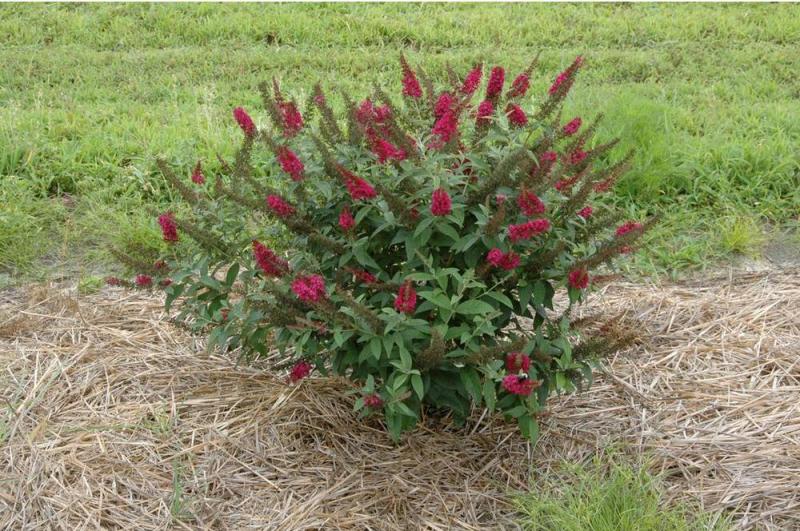
| PROS | CONS |
| Low maintenance required. Dense deciduous shrub. | In hot climates, it can become a harmful weed and expand aggressively. Deadheading of flowers when they start to wither. |
SPECIFICATIONS
- The dimensions of the plant are 48 inches in height and width.
- Spring season is the best time to grow this deer-resistant plant.
- The fragrant flowers need watering twice a week under medium light.
- Buddleia is the botanical name for the plant, while commonly, it is referred to as just Butterfly Bush.
HIGHLIGHTS
- It requires distinct cultural conditions for the sustainable growth of this 4-5 ft. tall and wide plant.
- A location with the full sun (8 hours) during the spring or fall season is preferable.
- It is advisable to check the USDA zones to ensure the range of hardy zones to lie in between 5-9.
- There is a seasonal variation for the quart shrubs, which are 5-8 inches tall from six months to one year.
- Shrubs shipped from November through April will arrive dormant while April through October will arrive green or in bloom.
FAQ
Q1. Can the plant withstand cold temperatures?
Miss Molly Butterfly Bush is hardy in zone 5-9, and to find out which zone you are in, check the USDA Plant Hardiness Zone Map.
Q2. Is it a perennial plant?
If the hardiness of the zone lies in between 5-9, it is considered as a perennial plant.
Q3. What are the minimum essential criteria to grow the plant?
It requires sunlight for at least six hours a day to grow in full potential.
3. Blue Chiffon Rose of Sharon Hibiscus Live Shrub Blue Flowers
The Blue Chiffon is an excellent flowering shrub from the lacy chiffon series adorns with blue hibiscus flowers from mid-summer into fall. This single lavender-blue flower plant is heat, aridity, and salt-tolerant and charms bees, butterflies, and hummingbirds. This delicate blue chiffon is a star in the garden with distinctive color complements of the flowers and can be made larger by pruning early 2-3 buds in early spring. The hallmark of the species is diverse and beautiful flowers in it’s a late-blooming period, which makes it a good choice for the customers.
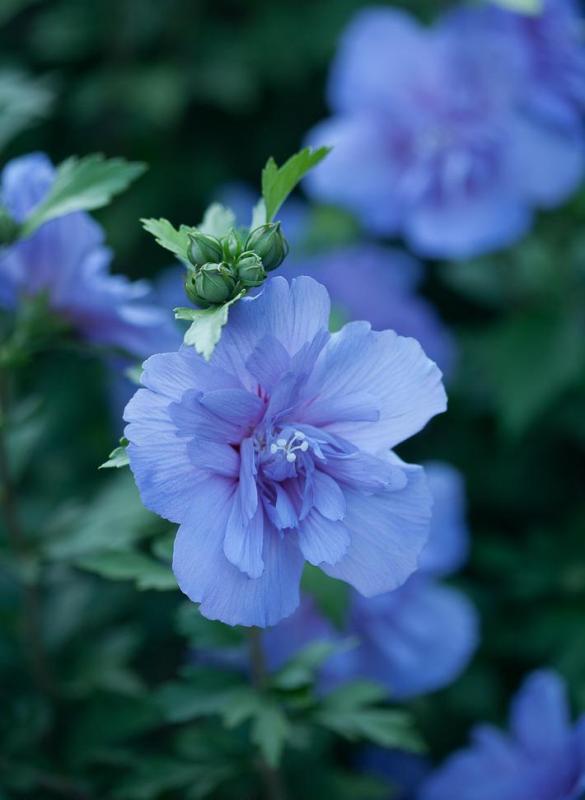
| PROS | CONS |
| It can be used as a specimen. Planting several shrubs together can form an ornamental hedge. | Sensitive to leaf spot and canker. Maintenance of soil moisture required. |
SPECIFICATIONS
- The dimensions of the plant are 96 inches in height and 48 inches in width.
- Spring season is the best time to grow this deer-resistant and drought-tolerant plant.
- The non-fragrant flowers need watering twice a week under medium light.
- Hibiscus is the botanical name for the plant while commonly also referred to as the same.
HIGHLIGHTS
- It requires distinct cultural conditions for the sustainable growth of this 8-12 ft. tall and 4-6 ft. wide plant at maturity.
- A location with the full sun (6+ hours) in a well-drained and loamy soil can be suitable for this plant.
- It is advisable to check the USDA zones to ensure the range of hardy zones to lie in between 5-9.
- There is a seasonal variation for the quart shrubs, which are 5-8 inches tall from six months to one year.
- Shrubs shipped from November through April will arrive dormant while April through October will arrive green or in bloom.
FAQ
Q1. Does the shrub produce any seed?
No, Blue Chiffon Rose of Sharon does not produce seeds.
Q2. Which is the best season to plant the shrub?
The best time to plant shrubs is in the spring and fall with heat tolerant and sunlight for 6+ hours every day.
Q3. Is it a good cut flower?
The Blue Chiffon Rose is not endorsed as a cut flower, though it does prune well and would make a wonderful supplement to any cut pattern.
4. Black Lace Elderberry (Sambucus) Live Shrub, Pink Flowers
Black Lace Elderberry, one of the geniuses plant, has purple-black foliage and is long-lasting and versatile. The creamy pink flowers with the dark leaves and red berries attract birds and other wildlife species, while some of the parts are toxic to them. This stunning plant with creamy pink flowers in spring, contrast with dark green leaves, followed by blackish-red berries which can be harvested for making wines, etc.
An easy to grow plant with many traditional medicinal values combining with beautiful blooms and looks are the special features to own the plant.
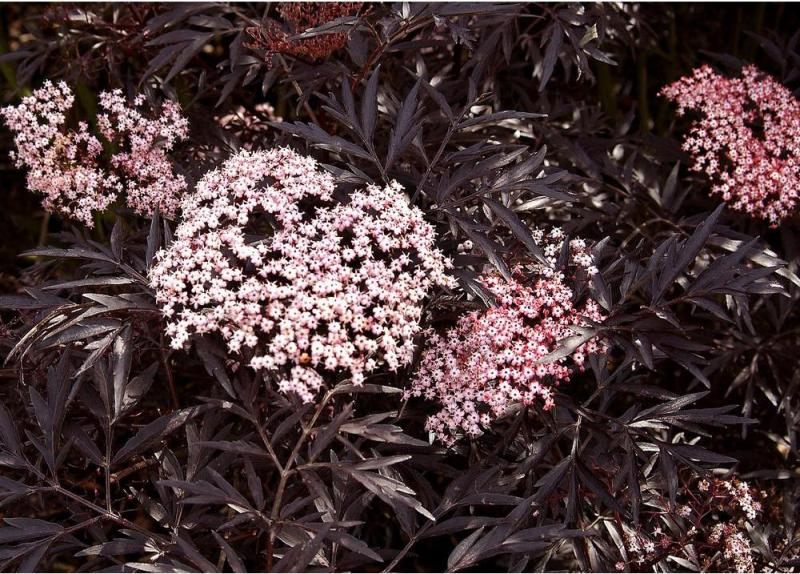
| PROS | CONS |
| Used in traditional medicine. Creating dyes for basketry. | Uncooked berries and other parts of the plant are toxic. Ingesting juices can cause illness. |
SPECIFICATIONS
- The dimensions of the plant are 72 inches in both height and width at maturity.
- Spring season is the best time to grow this deer-resistant plant.
The non-fragrant flowers need watering twice a week under full sunlight. - Sambucus nigra is the botanical name for the plant, while commonly, it is referred to as Elderberry.
HIGHLIGHTS
- It requires upright growth criteria for this 4-5 ft. tall and wide plant.
A location with the partial to full sun (4+ hours) is mandatory for the shrub. - It is advisable to check the USDA zones to ensure the range of hardy zones to lie in between 4-7.
- There is a seasonal variation for the quart shrubs, which are 5-8 inches tall from six months to one year.
- Shrubs shipped from November through April will arrive dormant while April through October will arrive green or in bloom.
FAQ
Q1. Are the berries of the shrub edible?
Yes, the berries are edible to humans while toxic to pets.
Q2. When is the best time of the year to plant this shrub?
The best time to plant is in the spring or fall season.
Q3. Is it a deciduous shrub?
Yes, it is a deciduous plant, meaning it will lose its leaves every fall before going dormant and produce new leaves every springtime.
5. Wine and Roses Reblooming Weigela (Florida) Live Shrub, Pink Flowers and Dark Purple Foliage
Wine and Roses Weigela, an award-winning shrub native to eastern Asian countries, is hard, dark purple foliage with rosy pink flowers and reblooming in the summer. The plant is deer-resistant and also attracted by the hummingbirds. This deciduous shrub, which has a rounded shape with a width larger in terms of height, maintains its color throughout the growing season.
The character and beauty of Weigela and it’s sheer charm attract the customer wandering around the garden.
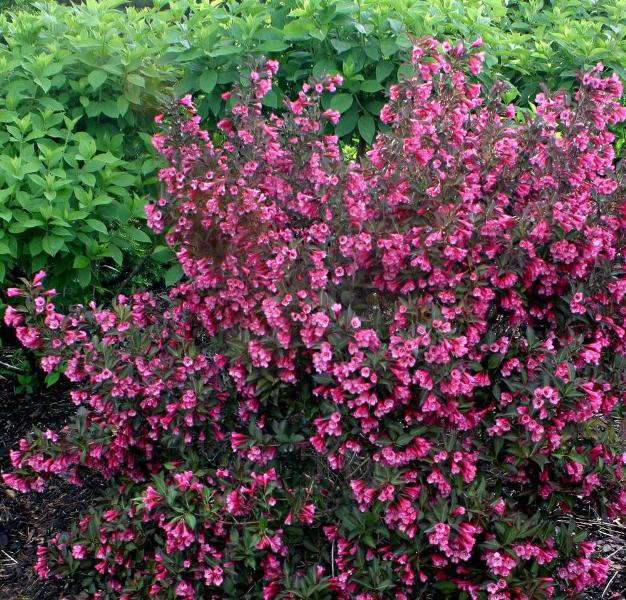
| PROS | CONS |
| Easy to sustain hedging shrub at garden border. Can be used for mass planting. | Aging stems should be cut-back frequently. It is affected by eelworms and honey fungus. |
SPECIFICATIONS
- The dimensions of the plant are 48 inches in both height and width at maturity.
- Spring season is the best time to grow this fairly deer-resistant plant.
The non-fragrant flowers need watering twice a week under full sunlight. - Weigela florida is the botanical name for the plant, while commonly, it is referred to as Weigela.
HIGHLIGHTS
- It requires upright growth criteria for this 4-5 ft. tall and wide plant.
A location with the partial to full sun (6+ hours) is mandatory for the shrub. - It is advisable to check the USDA zones to ensure the range of hardy zones to lie in between 4-8.
- There is a seasonal variation for the quart shrubs, which are 5-8 inches tall from six months to one year.
- Shrubs shipped from November through April will arrive dormant while April through October will arrive green or in bloom.
FAQ
Q1. Does the color of the flower stay pink all summer?
Yes, Wine & Roses Weigela has rosy pink flowers all springtime and dark purple foliage spring through fall.
Q2. What is the predicted blooming duration of the plant?
The plant blooms in late spring often rebloom by summer.
Q3. What soil condition is preferred?
Wine & Roses Reblooming Weigela prefers well-drained soils but is reasonably versatile to other soil variants.
6. Pink Chiffon Rose of Sharon (Hibiscus) Live Shrub, Light Pink Flowers
The distinctive and clear pink blooms of Pink Chiffon Rose of Sharon is a species from the same chiffon varieties. This beautiful shrub is an addition to summer gardens, which is also deer-resistant. It has charming dark, lush foliage throughout the season, and the lobed leaflets are extremely delicate but do not produce any significant fall color. The perfectly pink blooms should be witnessed to see how pretty they actually are! The unique small leaves and elegant stems make it a favorite of everyone around them.

| PROS | CONS |
| Can be trained into a smaller tree. An exceptional plant for the combined border or as a specimen plant. | Need for pruning in early summer Optimum sunlight requirement is mandatory |
SPECIFICATIONS
- The dimensions of the plant are 96 inches in height and 48 inches in width at maturity.
- Spring season is the best time to grow this fairly deer-resistant plant.
- The non-fragrant flowers need watering twice a week under full sunlight.
- Hibiscus is the botanical name for the plant, while commonly also it is referred to as the same.
HIGHLIGHTS
- It requires upright growth criteria for this 8-12 ft. tall and 4-6 ft wide plant.
- A location with full sun (6+ hours) is mandatory for the shrub.
- It is advisable to check the USDA zones to ensure the range of hardy zones to lie in between 5-9.
- There is a seasonal variation for the quart shrubs, which are 5-8 inches tall from six months to one year.
- Shrubs shipped from November through April will arrive dormant while April through October will arrive green or in bloom.
FAQ
Q1. Are these bushes or trees?
Pink Chiffon Rose of Sharon is a large shrub that can be trained into trees only if one desires to convert it.
Q2. Does it make a good cut-flower?
As the plant is a woody shrub, it does not make a good cut flower.
Q3. Can the plants be grown in a container?
Yes, they can grow and thrive in a container; however, each year, they will want to be cut back gradually as it won’t look glorious in a container during winter periods.
7. Lo and Behold ‘Lilac Chip’ Butterfly Bush (Buddleia) Live Shrub, Lavender-Pink Flowers
Lo and behold Lilac Chip produce soft, lavender-pink fragrant flowers from summer until frost without any deadheading. This deer-resistant shrub attracts butterflies and hummingbirds without producing any seedlings. The deep green foliage of the shrub pairs goes well with its fragrant lavender-pink blooms, which are long-lasting and constant. Lo and Behold Lilac Chip is a deciduous shrub with excellent flowers summer to cold. These are ideal for your smaller garden places where you want something glaring but don’t have a lot of space.
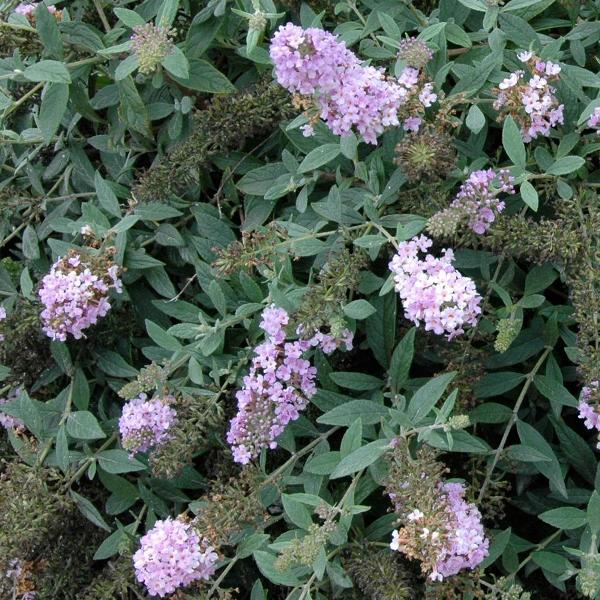
| PROS | CONS |
| It has an extensive root system. It is drought tolerant. | Diseases like borers and fungal infections can affect it. Won’t grow properly when the roots are restricted. |
SPECIFICATIONS
- The dimensions of the plant are 18 inches in height and 24 inches in width at maturity.
- Spring season is the best time to grow this fairly deer-resistant and drought-tolerant plant.
- The purple-colored fragrant flowers need watering twice a week under full sunlight.
- Buddleia is the botanical name for the plant, while commonly it is as Butterfly Bush.
HIGHLIGHTS
- It requires upright growth criteria for this 1.5-2 ft. tall and 2-2.5 ft wide plant.
- A location with full sun (8 hours) is mandatory for the shrub.
- It is advisable to check the USDA zones to ensure the range of hardy zones to lie in between 5-9.
- There is a seasonal variation for one-gallon shrubs, which are 6-14 inches tall from six months to one year.
- Shrubs shipped from November through April will arrive dormant while April through October will arrive green or in bloom.
FAQ
Q1. Is it an evergreen shrub?
Lo and Behold Lilac Chip Butterfly Bush is a Buddleia, one of the later plants to bloom, they flower mid-summer to mid-fall.
Q2. Can it be grown in a large container?
Yes, the plant can be grown in a large container for its proper growth.
Q3. Is it a scented plant?
Lo and Behold Lilac Chip Butterfly Bush is a fragrant bush with abundant and soft purple-colored flowers.
8. Pot Pink Muhly Grass Plant
Pink Muhly Grass, which is a spectacular array of late-season color as pink cotton candy blooms out in late summer to fall. The blue-green finely textured foliage is clump-forming and excellent as a ground covering. The native grass is also drought tolerant and forms a nice little hedge from spring through summer, but during the rosy-pink plumes arise, it grasps the garden limelight.
The dramatic pink flowers and adaptable to a wide range of soil and water conditions make it suitable for many garden uses and other dune spots.
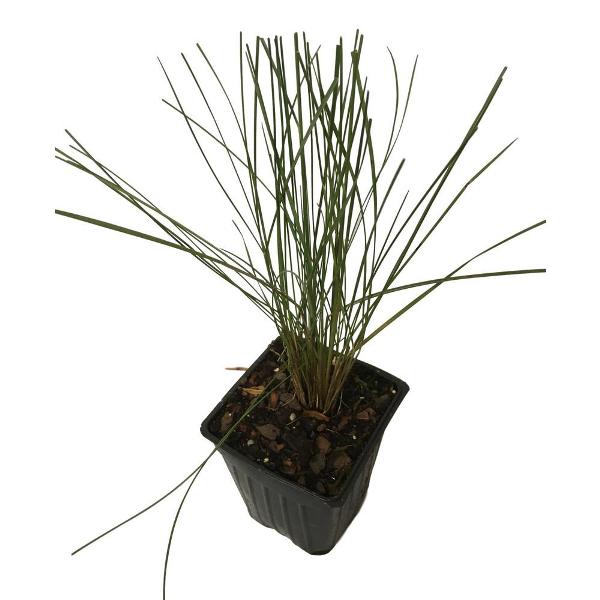
| PROS | CONS |
| Ability to tolerate poorly drained soils. Low-maintenance plant. | Soil fertility level should be maintained. Spindly growth and weakened stems in case of high nitrogen content. |
SPECIFICATIONS
- The dimensions of the plant are 24 inches in height and 18 inches in width at maturity.
- Spring to fall season is the best time to grow this drought-tolerant plant.
- The pink-colored fragrant flowers need watering once a week under full sunlight.
- Muhlenbergia capillaris is the botanical name for the plant, while commonly, it is as Muhly Grass.
HIGHLIGHTS
- The 4 ft in height and 3 ft in width plant has a nicely cascading and fountainous habit of foliage.
- A location with partial to full sun is great for borders and container gardening.
- It is advisable to check the USDA zones to ensure the range of hardy zones to lie in between 6-10.
- It is a strong additional plant adding beauty to any garden.
FAQ
Q1. What is the best time to trim Muhly grass?
Muhly grasses can be trimmed back to the ground, or ends of stems around 2 to 6 inches tall anytime following fall or winter.
Q2. How much sun does the plant need for its proper growth?
It needs full sun, which means at least six to eight hours of direct sunlight each day.
Q3. When does the plant bloom?
The blooming period of the plant is mainly from September to November.
9. Pink Mink (Clematis) Live Shrub, Pink Flowers
The sterile flowers of Pink Mink (Clematis) do not seed like its other varieties and blooms generally from early summer to fall. The variety which blooms on new wood should be pruned in late winter and can be trained to grow on a trellis. This deciduous shrub will lose its leaves during the fall and blooms on new wines to cut back to a pair of buds. An everyone can grow plant, with an abundance of bright pink blooms and proving to be great landscape, is a unique feature of Clematis.

| PROS | CONS |
| Can be grown on a trellis or in a mixed border. No fussy pruning required. | Partial to full sun requirement for proper growth. Prefers normal soil. |
SPECIFICATIONS
- The dimensions of the plant are 108 inches in height and 72 inches in width at maturity.
- Spring is the best time to grow this insect-resistant plant.
- The pink-colored non-fragrant flowers need watering twice a week under full sunlight.
- Clematis is the botanical name for the plant, while commonly, it is referred to as the same.
HIGHLIGHTS
- The dimensions of the plant are 9-10 ft in height and 6 ft in width at maturity.
- A location with partial to full sun (4+ hours) is required for the proper growth of the plant.
- It is advisable to check the USDA zones to ensure the range of hardy zones to lie in between 4-9.
- There is a seasonal variation for one-gallon shrubs, which are 6-14 inches tall from six months to one year.
- Shrubs shipped from November through April will arrive dormant while April through October will arrive green or in bloom.
FAQ
Q1. When does the plant start blooming?
Clematis starts blooming dark pink flowers from early summer to early fall.
Q2. Is it toxic to pets?
Pink Milk (Clematis)is a deciduous shrub that is insect-resistant.
10. Brilliant Sedum, Live Bare Root Ground Cover Perennial
Brilliant sedum is a standout perennial plant with small clustered green buds in mid-summer, which gradually opens into large pink flowers. This drought-tolerant plant grows quickly and is easy-care nature. The deepening to rich rusty red and seed heads provide winter interest and food for birds. It is also one of the taller growing sedums from its wide varieties. The wonderful drought-tolerant plant blooms its best flowers in full sun and an easy to grow plant attracted by the butterfly is one of the unique characteristics of this Brilliant Sedum.
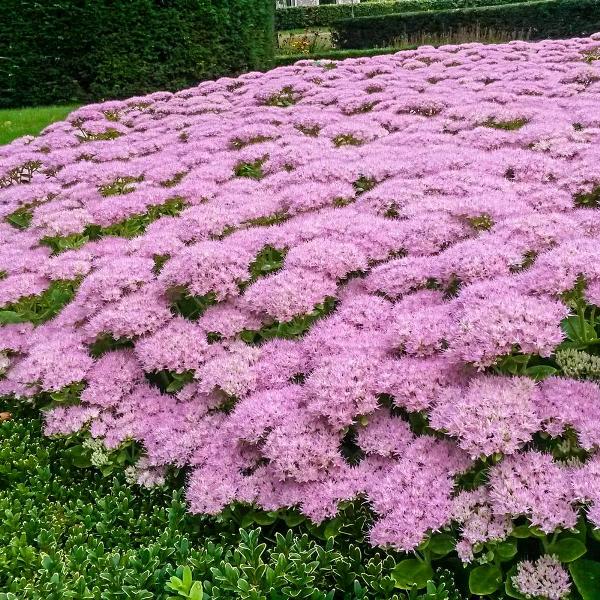
| PROS | CONS |
| Easy maintenance plant. Grows quickly. | Incapability to take heavy foot traffic. Leaves and stems are fragile. |
SPECIFICATIONS
- The dimensions of the plant are 24 inches in both height and width at maturity.
- Spring to fall season is the best time to grow this deer-resistant plant.
- The pink-colored non-fragrant flowers need watering when the soil is dry under full sunlight.
- Sedum spectabile ‘Brilliant’ is the botanical name for the plant, while commonly, it is referred to as sedum.
HIGHLIGHTS
- It requires upright growth criteria for this 18-24 inches tall plant.
- A location with full sun (4+ hours) is required for the proper growth of the plant.
- It is advisable to grow plants within the space of 18-24 inches apart for better results.
- Shrubs shipped from November through April will arrive dormant while April through October will arrive green or in bloom.
FAQ
Q1. What is the best soil to grow this plant?
Well-drained soil is preferable for the proper growth of this plant as it is susceptible to rot.
Q2. Does sedum need to be raised in full sun?
The plant requires at least 6-8 hours of sunlight every day.
Q3. Do the flowers have a smell?
There is no specific smell as for the flowers of Brilliant Sedum.
11. Pot Phenomenal Lavender Plant
Phenomenal Lavender plant is an evergreen perennial sub-shrub, which is one of the most adaptable plants capable of thriving in any climate. This groundbreaking hardy cultivar is a hybrid of English lavender that withstands rot and survives up to other foliar diseases that can make it a challenge to grow anywhere. The flowers bloom heavily in late spring and early summer much sooner as compared to other varieties.
The heavily blooming plant is recommended for edges, fields, bulk plantings and containers in full sunshine and well-drained soil with hardy zones lying between 4-8.
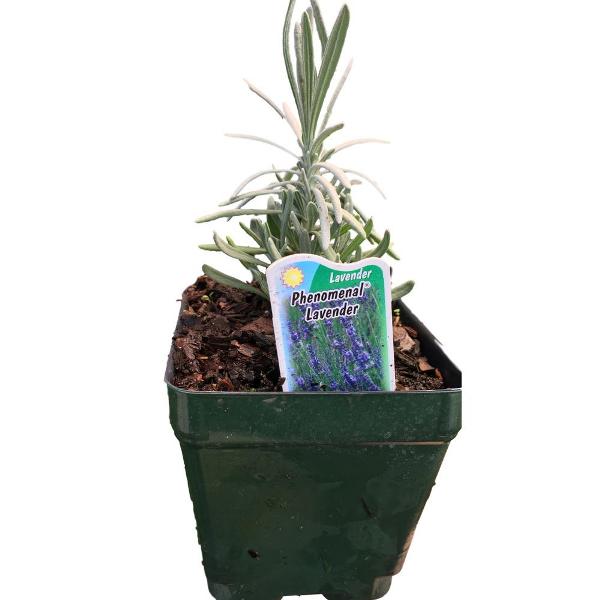
| PROS | CONS |
| Ability to grow in climates with extreme heat and humidity. Resistant to root and foliar diseases. | Soil should be conducive. Neglecting to prune may lead to thick wood stems. |
SPECIFICATIONS
- The dimensions of the plant are 10 inches in height and 18 inches in width at maturity.
- Spring to fall season is the best time to grow this deer-resistant plant.
- The pink-colored fragrant flowers need watering once a week under full sunlight.
- Lavandula Intermedia is the botanical name for the plant, while commonly, it is referred to as Lavender Plant.
HIGHLIGHTS
- This 24-32 inches in height and 18-24 inches in width plant makes a brilliant border or short edge.
- A location with full sun is required for the proper growth of the plant.
- It is advisable to check the USDA zones to ensure the range of hardy zones to lie in between 4-9.
- The bright blue blooms build a covering of color breathtaking, also in a tiny planting.
FAQ
Q1. Is the plant large in size?
The plant is a medium-sized producer with nice green foliage and blooms with purple flowers on tall stalks in mid-summer.
Q2. Can it be grown in winter?
It resists to die back in winter, permits extreme heat and humidity without vanishing out.
12. Pot Itoh Peony Oochigeas (Paeonia) Live Potted Perennial Light Orange/Pink Flowers
The elegant double blooms of Peony Oochigeas produce flowers in color blends of pastel apricot and delicate rose and pink. The lush foliage after blooming in late spring on a medium-sized bush keeps the plant looking charming even for months. Historically, some of the Itoh’s were challenging to grow and difficult to find and costly to afford. The strong dark foliage supports firm stems that require no staking. Those who admire bright and colorful flowers that last for decades in the garden should opt peony as their perennial plant.
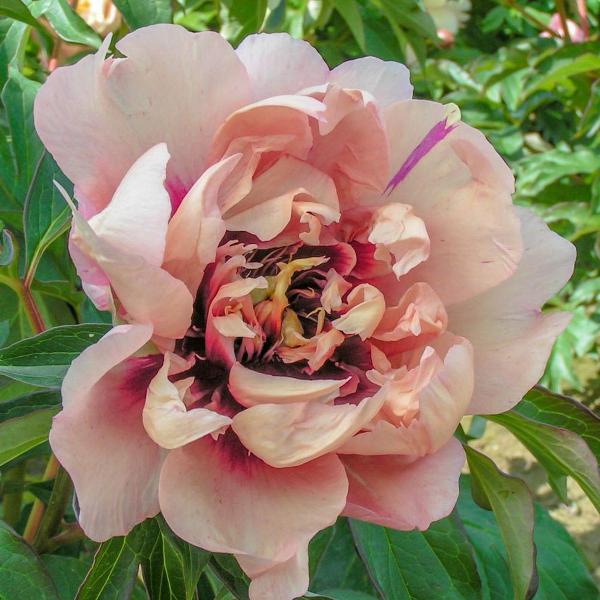
| PROS | CONS |
| Flowers last longer. Itoh peonies are also immune to peony decay. | Delicate branches which break easily. Prone to disease and insect problems. |
SPECIFICATIONS
- The dimensions of the plant are 10 inches in height and 18 inches in width at maturity.
- Spring to fall season is the best time to grow this deer-resistant plant.
- The pink-colored fragrant flowers need watering once a week under full sunlight.
- Lavandula Intermedia is the botanical name for the plant, while commonly, it is referred to as Lavender Plant.
HIGHLIGHTS
- This 24-28 inches in height plant should be planted maintaining space approximately 24-36 inches apart for better results.
- A location with well-drained, humus-enriched, moisture-retentive sandy soil is required for better growth.
- The bright flower blooms in late spring.
FAQ
Q1. How to take care of Peony flowers?
Proper maintenance involves deadheading the used flowers, cutting herbaceous peony to the ground in the fall.
Q2. How to prepare it for winter?
The best way is to clean up the dead plant matter and dispose of it in the waste, as the trash can withhold insects and illness.
Q3. When to cut-back them?
As the foliages turn to yellow, herbaceous pennies should be cut-down.
13. Lenten Rose
Lenten Rose, a hellebore hybrid, derived its name because of its similarity to the bloom of a rose. This evergreen perennial starts blooming in early winter, which is gorgeous and long-lasting. This disease and the pest-resistant plant is long-lived and contribute good color throughout the growing season. It combines evergreen foliage with charming blooms of different colors that last for weeks. Lenten Rose is valued for its early bloom and is one of the best plants to adorn the vase at home, which is attractive year-round.
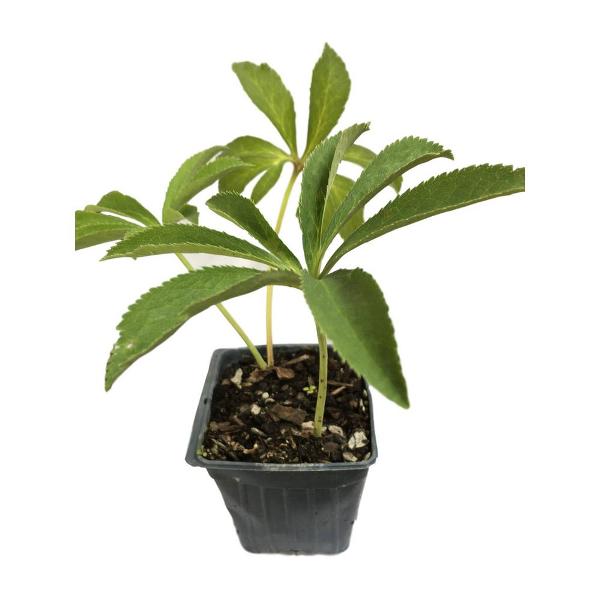
| PROS | CONS |
| Create a carpet of foliage. Easy to maintenance plant. | It doesn’t tolerate transplantation. Mature plants can form clumps. |
SPECIFICATIONS
- The dimensions of the plant are 12 inches in height and 18 inches in width at maturity.
- Spring to fall season is the best time to grow this deer-resistant plant.
- The assorted-colored non-fragrant flowers need watering twice a week under full sunlight.
- Helleborus Orientalis is the botanical name for the plant, while commonly, it is referred to as Helleborus.
HIGHLIGHTS
- A location with partial to full sun is required for better growth.
- One of the rarest flowers to give beautiful blooms by mid-winter.
- It is advisable to check the USDA zones to ensure the range of hardy zones to lie in between 4-9.
- Shrubs shipped from November through April will arrive dormant while April through October will arrive green or in bloom.
FAQ
Q1. What are the possible colors of the flowers?
There exists a variety of colors, which include green, white, yellow, red, black, and many variations of pink and purple.
Q2. What is the mature height and width of the plant?
The mature height is 12 inches, and the width is 185 inches of Lenten Rose.
14. Lavender Grosso
Grosso Lavender, which is a woody perennial hybrid variety, is recognized for its sturdy growth habit and ease of preservation. This aromatic herb produces huge and profuse blooms which are preferred over the strains as it is tolerant to cold. It also works well as a perfumed plant or an emphasis when planted with Bergamot, Feverfew, or Joe Pye Weed. Grosso is commonly called Fat Spike and is a self-sufficient plant. As the plants tend to be more and more condensed, it makes an extravagant choice for a hedge attracting bees, butterflies, and other pollinators.
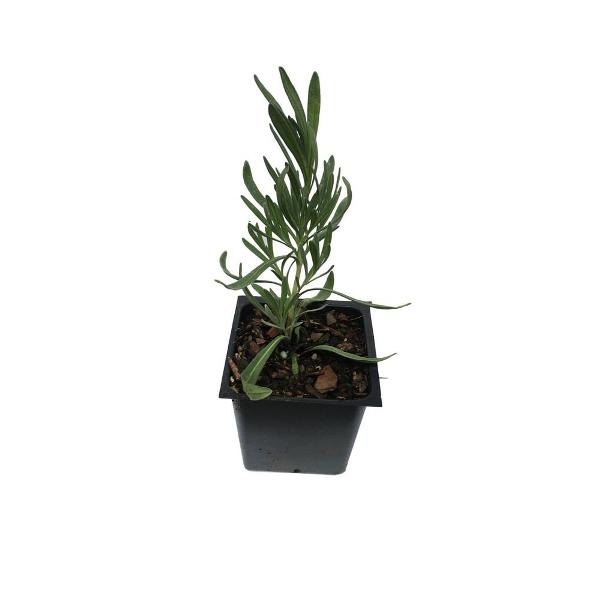
| PROS | CONS |
| Deer and rabbit-resistant. Used as a stress reliever and added in spa products. | Cannot tolerate humidity. Still, air makes them sensitive to fungus ailments. |
SPECIFICATIONS
- The dimensions of the plant are 24 inches in both height and width at maturity.
- Spring to fall season is the best time to grow this plant.
- The purple-colored fragrant flowers need watering once a week under full sunlight.
- Lavendula x intermedia is the botanical name for the plant, while commonly, it is referred to as Lavender Plant.
HIGHLIGHTS
- A location with full sun (6-8 hours) is required for better growth.
One of the tallest flowers of the lavender variety to give beautiful blooms by summer. - It is advisable to check the USDA zones to ensure the range of hardy zones to lie in between 5-9.
- Quick shipping to ensure a healthy product is necessary.
FAQ
Q1. Does Grosso Lavender need full sun?
A location with full sun (6-8 hours) per day is required for better growth.
Q2. How big does the plant grow?
The plant grows to form a mound up to 24 inches in both height and width.
15. Pot Purple Wandering Jew Plant Non-Flowering
The Purple Heart Plant, also called Wandering Jew plant, prefers bright indirect light. The heart-shaped leaves depend on the species that have distinct stripes and shine. The blooms are small, with three petals available in colors of violet and white. It is known as an invasive shrub and can thrive on practically any exterior with the minimal requirements for growth.
Wandering Jew plants and its vivid purple leaves require only full sunlight during the entire day and a reasonable amount of water in the week to make it a fantastic home plant.
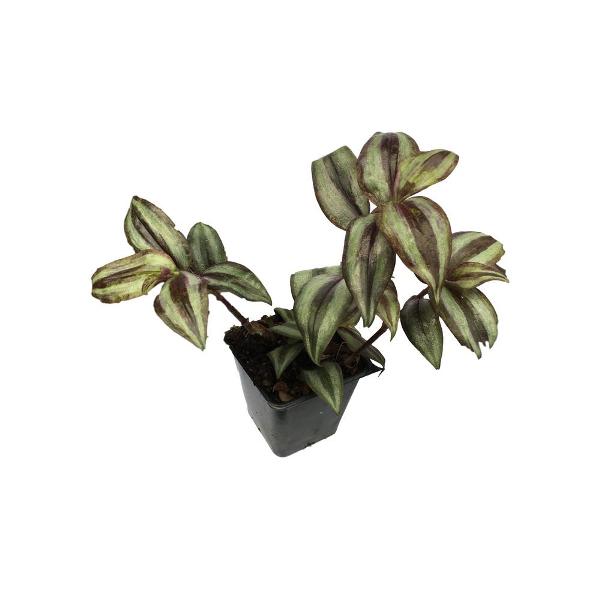
| PROS | CONS |
| Easy to grow house-plant. Strong healthy product. | Leaf markings fade if the light is too dim. Excess care to be taken during the winter. |
SPECIFICATIONS
- The dimensions of the plant are 6 inches in height and 10 inches in width at maturity.
- Spring to fall season is the best time to grow this plant.
- The no blossom fragrant flowers need watering once a week under full sunlight.
- Tradescantia Pallida is the botanical name for the plant, while commonly, it is referred to as Assorted Mix.
HIGHLIGHTS
- A location with morning sun or very bright indirect light is required for better growth.
- One of the succulent flowers with different varieties to give beautiful blooms and addition to the garden.
- Quick shipping to ensure a healthy product is necessary.
FAQ
Q1. What are the dimensions of the product?
The dimensions of the plant are 6 inches in height and 10 inches in width at maturity.
Q2. What is the temperature appropriate for the growth of this plant?
The temperature should be between 50-80 Fahrenheit for the proper growth of the plant.
Q3. What soil is preferable?
Moderately moist in average humidity is preferable for the plant.
16. Red Pot Abyssinian Banana Plant
Red Abyssinian Banana Plant, an exceptional exquisite banana from the high peaks of East Africa, is botanical curiosity. The most delicate aspect is that the foliage is crimsoned with burgundy, remarkably fixed as the new growth develops. The coloration becomes stronger and stronger as the levels become higher. Despite its sensitive nature, it is popular as a summer bedding plant resembling the banana leaves pattern. Red Abyssinian Banana Plant is an amazing plant which is a relative newcomer in the list of easy to grow perennial plant with quite easy maintenance except in cold regions.
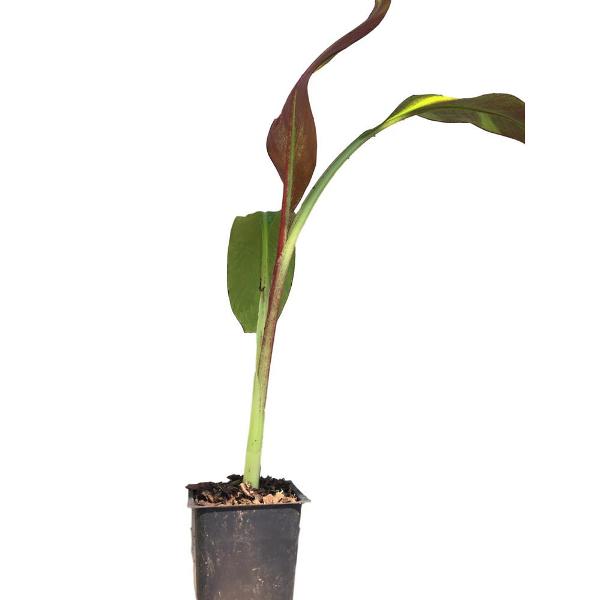
| PROS | CONS |
| Used in large summer containers. Strong healthy product. | Non-offsetting monocarpic plants. |
SPECIFICATIONS
- The dimensions of the plant are 84 inches in height and 48 inches in width at maturity.
- Spring to fall season is the best time to grow this deer-resistant plant.
- The red fragrant flowers need watering once a week under medium sunlight.
- Ensete Ventricosum is the botanical name for the plant, while commonly, it is referred to as Assorted Mix.
HIGHLIGHTS
- A location with full sun and moist soil is required for better growth.
- It is advisable to check the USDA zones to ensure the range of hardy zones to lie in between 8a-10b.
- One of the fantastic tropical plants which produce stunning red coloration on green leaves forming a nice backdrop for other tropicals.
- Ensete maurelii is often regarded as the Ethiopian banana, raised mainly as foliage plants, which is a reasonable frost repellent perennial rising 10 ft. to 20 ft. H with leaves up to 10ft.
- Quick shipping to ensure a healthy product is necessary.
FAQ
Q1. Does the plant produce banana fruits?
Yes, Red Abyssinian Banana Plant produces banana fruits.
Q2. What does the coloration depend on?
Adequate coloration depends on receiving an abundance of sunlight, on expecting it redden up in the summer season.
Q3. How frequently should the plant be watered?
The plant needs watering once a week under medium sunlight.
17. Pot Sweet Summer Love Clematis Vine Live Potted Perennial Plant with Red Flowers
The fragrant Sweet Summer Clematis is a deciduous shrub that combines a sweet vanilla scent and large, complete, 2in. flowers that start deep, raspberry red and mature to purple. It blooms up to 2000 flowers on one mature plant during the fall. The sturdiness and the ease of growth beginning in July in the midwest and northeast, and continuing till mid-September. This amazing variety stands head and shoulders above others of its kind.
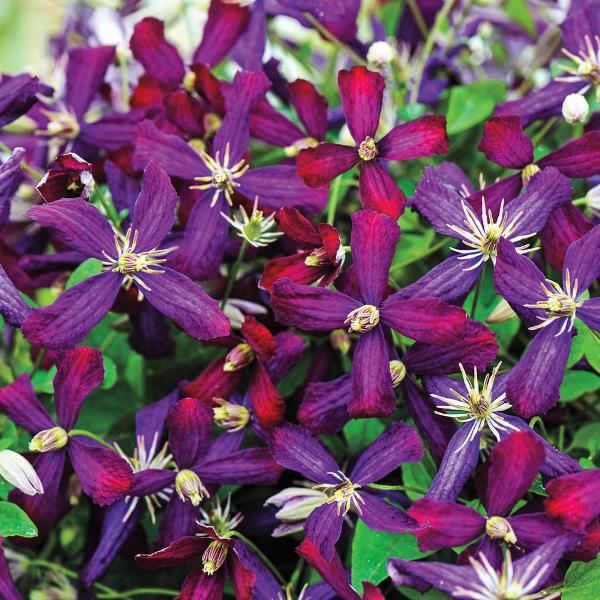
| PROS | CONS |
| Ideal for container gardening. Vigorous growth. | Excess nitrogen can damage the plant. Brittle Stems. |
SPECIFICATIONS
- The dimensions of the plant are 180 inches in height and 120 inches in width at maturity.
- Spring season is the best time to grow this pollinator-attracting plant.
- The red non-fragrant flowers need watering twice a week under full sunlight.
- Clematis ‘Sweet Summer Love’ is the botanical name for the plant, while commonly, it is referred to as Clematis.
HIGHLIGHTS
- A location with partial to full sun and well-drained and moist soil is required for better growth.
- It is advisable to grow plants within the space of 6ft and 10ft apart.
- The plant reaches a standard mature height of 10 ft to 15 ft.
- Quick shipping to ensure a healthy product is necessary.
FAQ
Q1. What are the types of Summer Clematis?
The two common types of Summer Clematis are Sweet Autumn and Durand.
Q2. Is the plant drought-tolerant?
Yes, the plant is drought-tolerant and cold hardy.
Q3. When is the best time to prune it?
In early spring, it is good to prune the plant to 8inches to 12 inches.
18. Pot Creeping St. Johns Wort Plant
Creeping St. Johns wort, also called Aarons beard, is linked to the European species, which blooms from July through August with magical bloom properties. It is one of the most highly versatile ground coverings in the trade and spread vigorously to cover an embankment even in conditions of shade. The simple opposite green arranged leaves are ovate-oblong in shape up to 2-4 long and turn yellow in the shade.
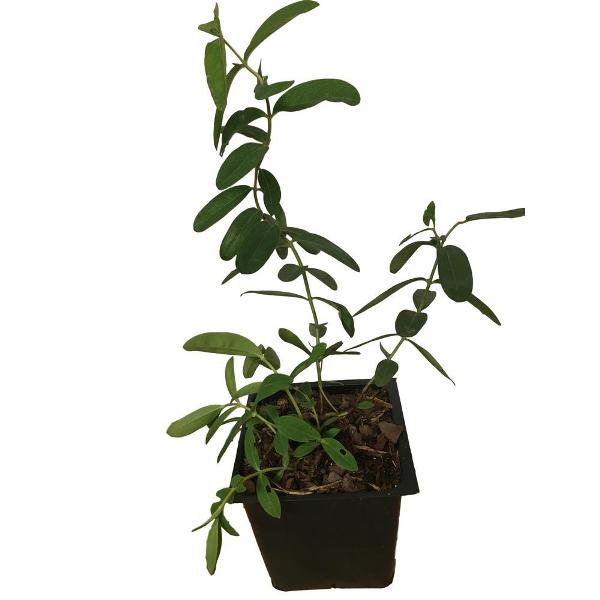
| PROS | CONS |
| Strong healthy product. Good for slope and erosion control. Drought-tolerant. | Contains a toxin that can cause a photosensitizing reaction. |
SPECIFICATIONS
- The dimensions of the plant are 10 inches in both height and width at maturity.
- Spring to fall season is the best time to grow this plant.
- The yellow-colored fragrant flowers need watering once a week under medium sunlight.
- Hypericum Anagalloides is the botanical name for the plant, while commonly, it is referred to as St. John’s Wort.
HIGHLIGHTS
- A location with partial to full sun is required for better growth.
- Flowers consist of five petals enclosing a compact clump of pointing yellow stamens that match an old fashioned shaving hedge.
- It is advisable to check the USDA zones to ensure the range of hardy zones to lie in between 6-10.
- Quick shipping to ensure a healthy product is necessary.
FAQ
Q1. How to care for St. Johns Wort plant?
It is advisable to cut damaged stems back to back for proper caring of the plant.
Q2. When is the best time to plant it?
Seeds can be sown during spring or fall to attain the best results.
Q3. What is the growing habit of the plant?
It grows with a creeping structure in the garden.
19. Quart Moonbeam Coreopsis (Tickseed) Live Native Perennial Plant with Creamy Yellow Flowers
Moonbeam Coreopsis is a popular perennial which lightens the garden and containers with creamy yellow appearance. The blooms are especially yielding, and the customer can create their cut-flower arrangements. This deciduous shrub dies back to the ground in winter and returns and is evergreen in warmer zones. It is often used in mass plantings, container gardens, natural garden beds, and borders.
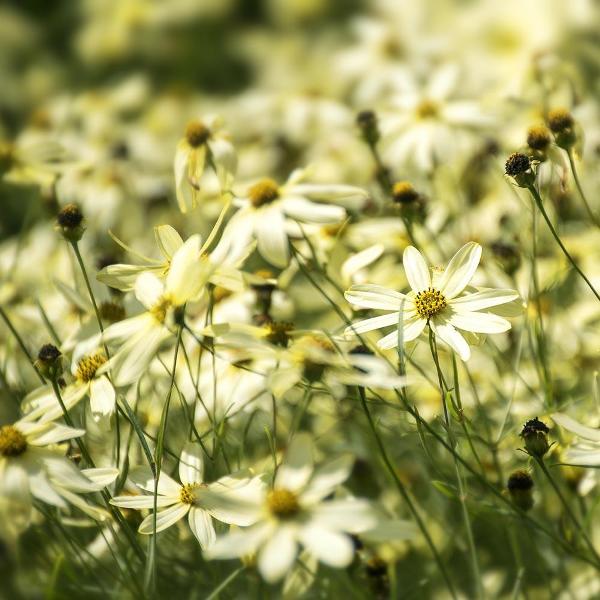
| PROS | CONS |
| Heat and humidity tolerant. Low-maintenance plant. | Delicate Stems. |
SPECIFICATIONS
- The dimensions of the plant are 18 inches in height and 24 inches in width at maturity.
- Spring to fall season is the best time to grow this deer-resistant plant.
- The yellow-colored non-fragrant flowers need watering twice a week under full sunlight.
- Coreopsis verticillata ‘Moonbeam’ is the botanical name for the plant, while commonly, it is referred to as Tickseed.
HIGHLIGHTS
- It is advisable to grow plants within the space of 10ft apart.
- The plant reaches 18 inches in height and 24 inches in weight at maturity.
- A location with full sun in average soils with good drainage is required for better growth.
- The variety is known for its light and fragile foliage that creates a notably bright appearance.
- It is advisable to check the USDA zones to ensure the range of hardy zones to lie in between 3-9.
- The surety of blooming on arrival is not guaranteed.
FAQ
Q1. Does Tickseed produce fragrant flowers?
The plant produces yellow-colored non-fragrant flowers.
Q2. What is the growing habit of the plant?
Tickseed experiences clumping patterns of growth.
Q3. Does the plant have any state regulations for shipping?
This perennial shrub cannot be shipped to HI, AK, GU, PR, or VI due to existing state regulations.
20. People Eater Angel Trumper (Datura) Live Potted Perennial Plant
The ruffled blooms of People Eater Angel Trumper plant boast its large, purple fragrant lavish flowers edged in snowy white. This great tropical plant makes a fine specimen in a sunny site. The soft and erect stems having a grayish green tinge appearance is the highlight of the plant, which is a member of the plant family called nightshade family. It is also attracted to the large shiny double blooms in a year.
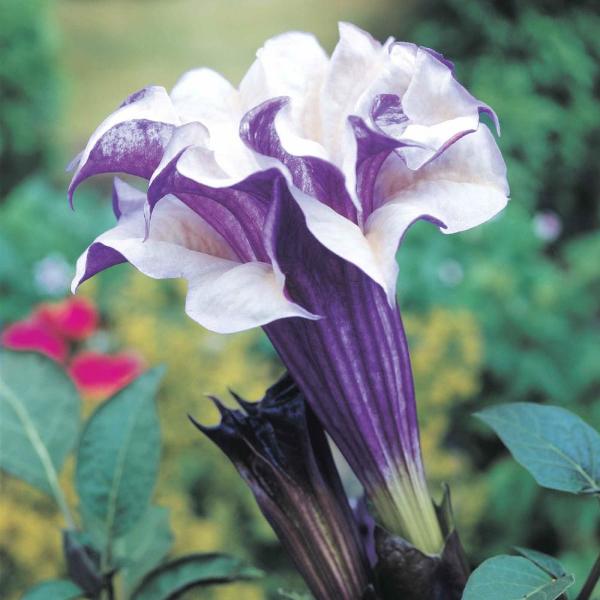
| PROS | CONS |
| Easy to grow plant at home. Smells gorgeous. | All plant parts are poisonous. In mild climates, it won’t sustain. |
SPECIFICATIONS
- The dimensions of the plant are 60 inches in height and 36 inches in width at maturity.
- Spring to fall season is the best time to grow this plant.
- The purple-colored fragrant flowers need watering twice a week under full sunlight.
- Datura meteloides ‘Cornucopaea’ is the botanical name for the plant, while commonly, it is referred to as Angel Trumpet.
HIGHLIGHTS
- It is advisable to grow plants within the space of 24-36 inches apart.
- The plant reaches 4-5 ft in height at standard maturity.
- A location with full sun well drained and humus enriched soil is required for better growth.
- The variety is an exotic species which creates an amazing focal point planting.
FAQ
Q1. What is the hardiness zone of the plant?
It is advisable to grow the plant in regions with hardiness range lying between 9-10 for proper growth of the plant.
Q2. Can it be grown in containers?
The plant can be arranged as container gardening for showy flowers.
Q3. How big do the blooms grow?
These enormous blooms grow to 8 in. L by sizes of 10 in. in leaves
The flowering perennials are easy to grow and have beautiful characteristics making it convenient to grow anywhere. Sun and shade perennials are the most reliable choices with easy maintenance required. The life cycle of a perennial depends on several factors, distinctly the type of plant and whether it’s laughing in your garden. But you can demand to get the point of two years and a peak of a decade out of the immense bulk of blooms of perennials. All you have is to take good care of them with full savings and watering requirements in a week!





